Weekly Recap
US stocks rose modestly last week, booking the fourth straight weekly rise, hovering around record highs. The USD rose over 2.1%, jumping to a six-week high. The moves came as the market reined in expectations of an outsized Fed rate cut in November, cheered upbeat data, and looked cautiously at escalating tensions in the Middle East.
Last Monday, Federal Reserve Chair Jerome Powell dampened expectations of another 50 basis point cut in November, instead signaling a steady, methodical rate reduction cycle. This, combined with US non-farm payroll ‘s smashing economists’ forecasts with 254k jobs added, unemployment falling to 4.1%, and wage growth rising, means the market is now 95% certain the Fed will cut rates by 25 basis points in November rather than 50 basis points previously expected.
USD/JPY was a key focus last week, jumping 4.5% across the week on more hawkish Fed expectations and after Japan’s new Prime Minister played down rate hike expectations, insisting that the environment wasn’t suitable for further hikes.
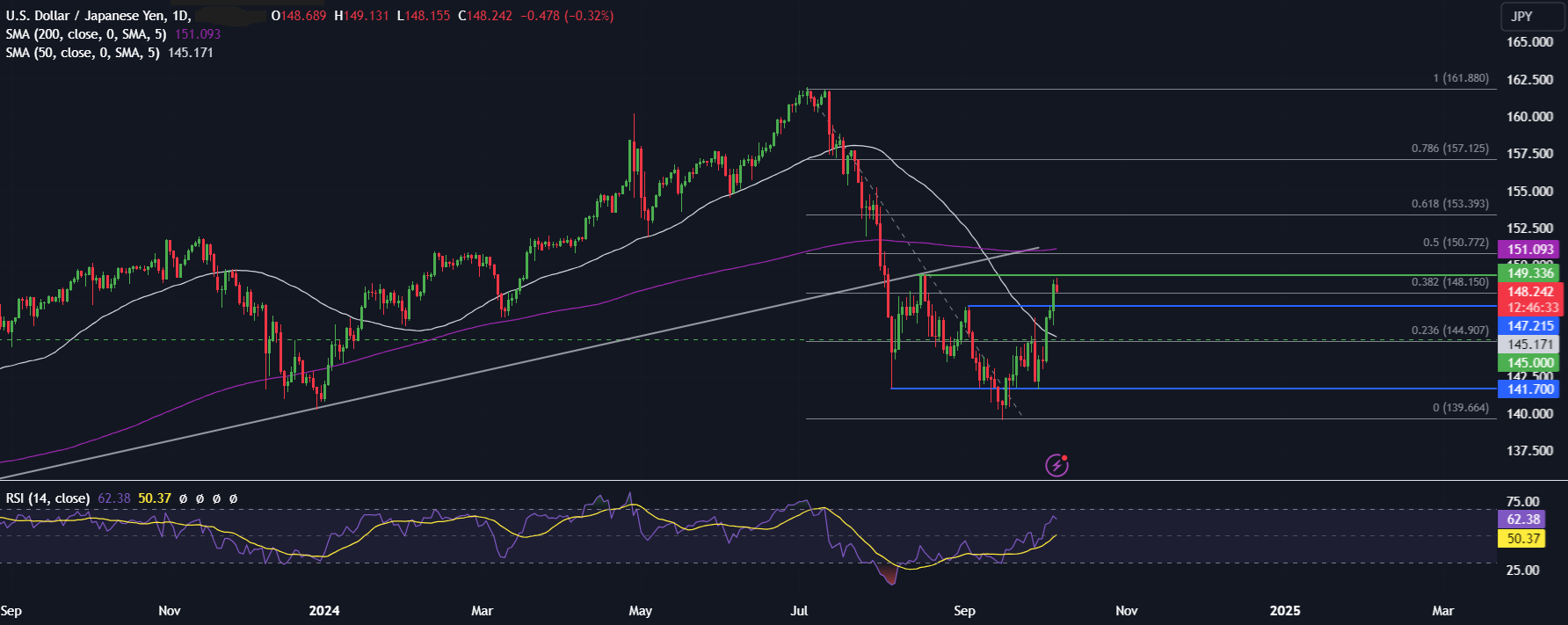
RBNZ rate decision (Wednesday)
The RBNZ is expected to continue cutting rates at the meeting this week, with the market pricing in a 96% probability of a 50 basis point cut to the OCR to 4.75%, down from the current rate of 5.25%. The meeting comes as the RBNZ cut rates by 25 basis points at the previous meeting in August and amid mounting concerns over inflation undershooting the central bank’s 2% target. The RBNZ’s primary goal is the containment of inflation; most recent data suggests this has been achieved. There’s growing evidence to suggest that inflation could soon be below the 2% midpoint of the RBNZ’s target band. Meanwhile, GDP contracted in Q2, unemployment rose, and house prices fell as higher borrowing costs suppressed demand.
As well as cutting by 50 basis points in this meeting, the RBNZ rate is also expected to be cut by a further 50 basis points on November 27, taking the OCR to 4.25%.
Dovish expectations surrounding the RBNZ, compared to a slightly more hawkish stance from the US Federal Reserve, pulled NZD/USD down 2.8% last week to a two-week low. The pair tests support of the 50 SMA.
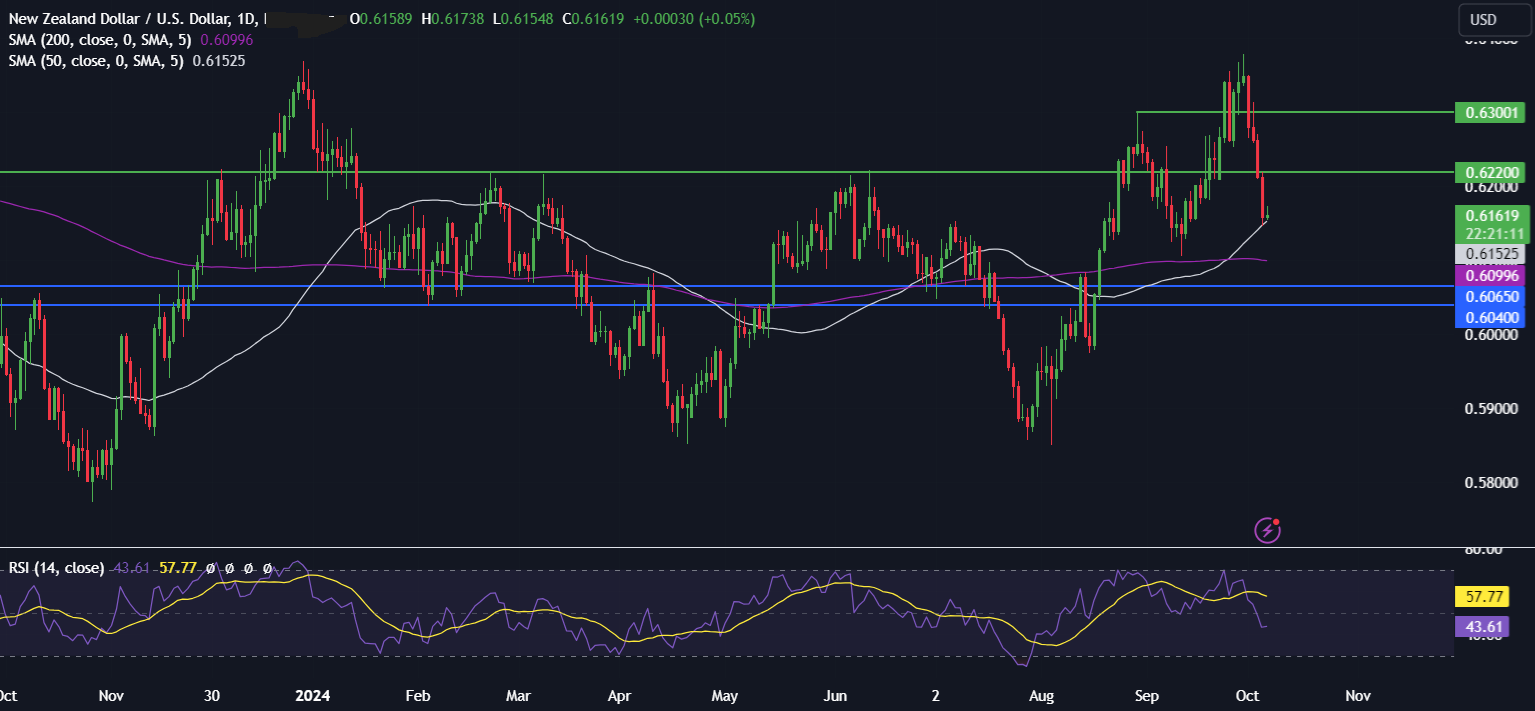
FOMC minutes (Wednesday)
The minutes of the October meeting will be released on Wednesday. They could provide further insight into policymakers’ mindsets as they kicked off the Federal Reserve’s rate-cutting cycle with a bumper 50 basis point reduction. The minutes could also give additional clues about the pace of rate cuts this year. At the meeting, the dot part pointed to two further 25 basis point rate cuts in November and December. Dovish-sounding minutes could see the US dollar fall lower.
Still, the minutes come following the speech by Federal Reserve chair Jerome Powell last week and speeches by several Fed officials, who have signaled a steady, methodical approach to rate cuts in the future.
Gold prices are trading below the all-time high reached at the end of September as the market reassesses the likelihood of another 50-bps rate cut. However, safe-haven flows amid geopolitical tensions remain supportive of gold.
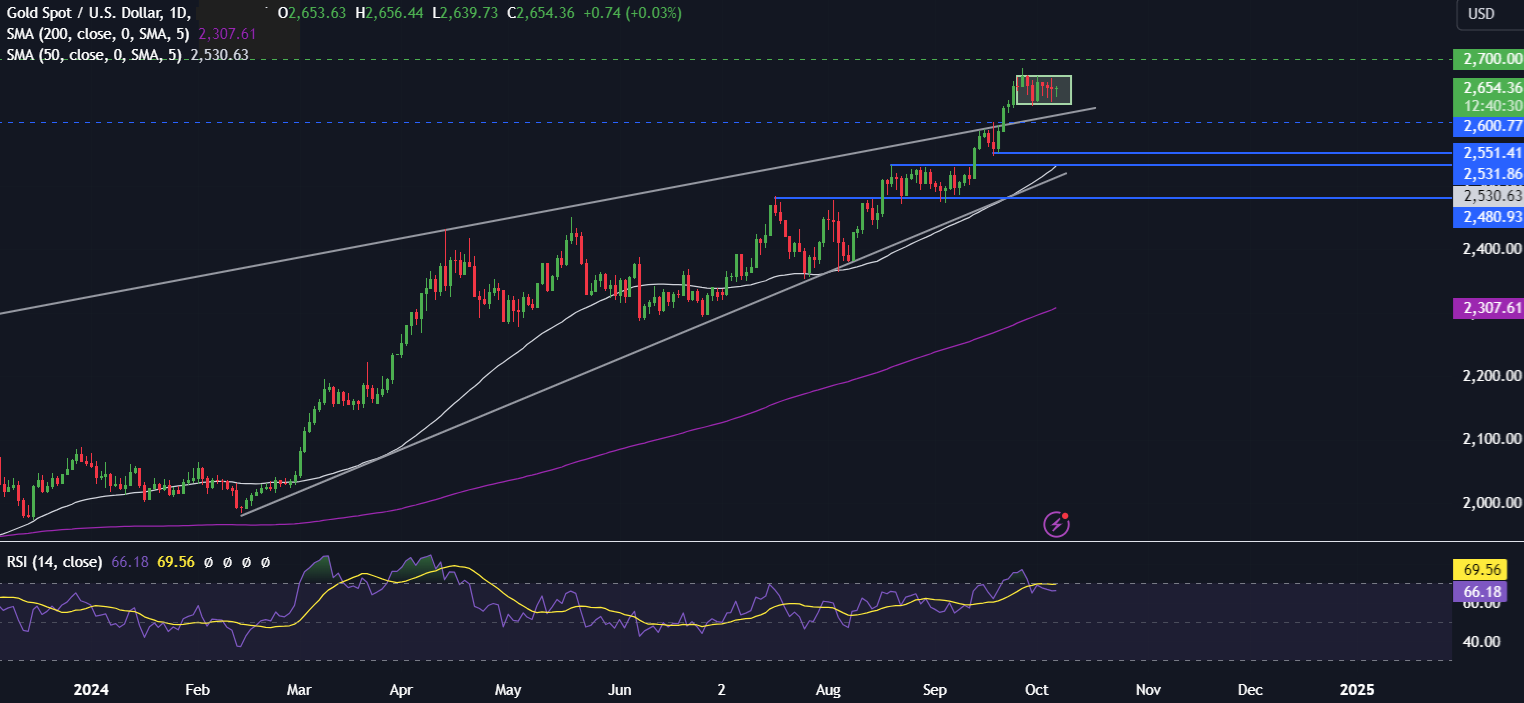
ECB Minutes (Thursday)
The minutes of the October ECB meeting will be released on Thursday. To recap, this was when the central bank cut the deposit rate by 25 basis points from 3.75% to 3.5%. In the policy statement, the ECB reiterated that it will continue a meeting-by-meeting approach and remain data-dependent. The ECB reiterated that it will not pre-commit to a specific policy path. Meanwhile, the accompanying projections saw growth forecasts downwardly revised.
ECB president Christine Lagarde refused to commit to a position or comment on October rate cuts. However, data since the meeting has shown inflation now below the central bank’s 2% target and ongoing concerns regarding the growth outlook for the region. The market expects a 25 basis point cut in October and will scrutinize the minutes, retail sales, and German factory data this week for further clues to confirm this.
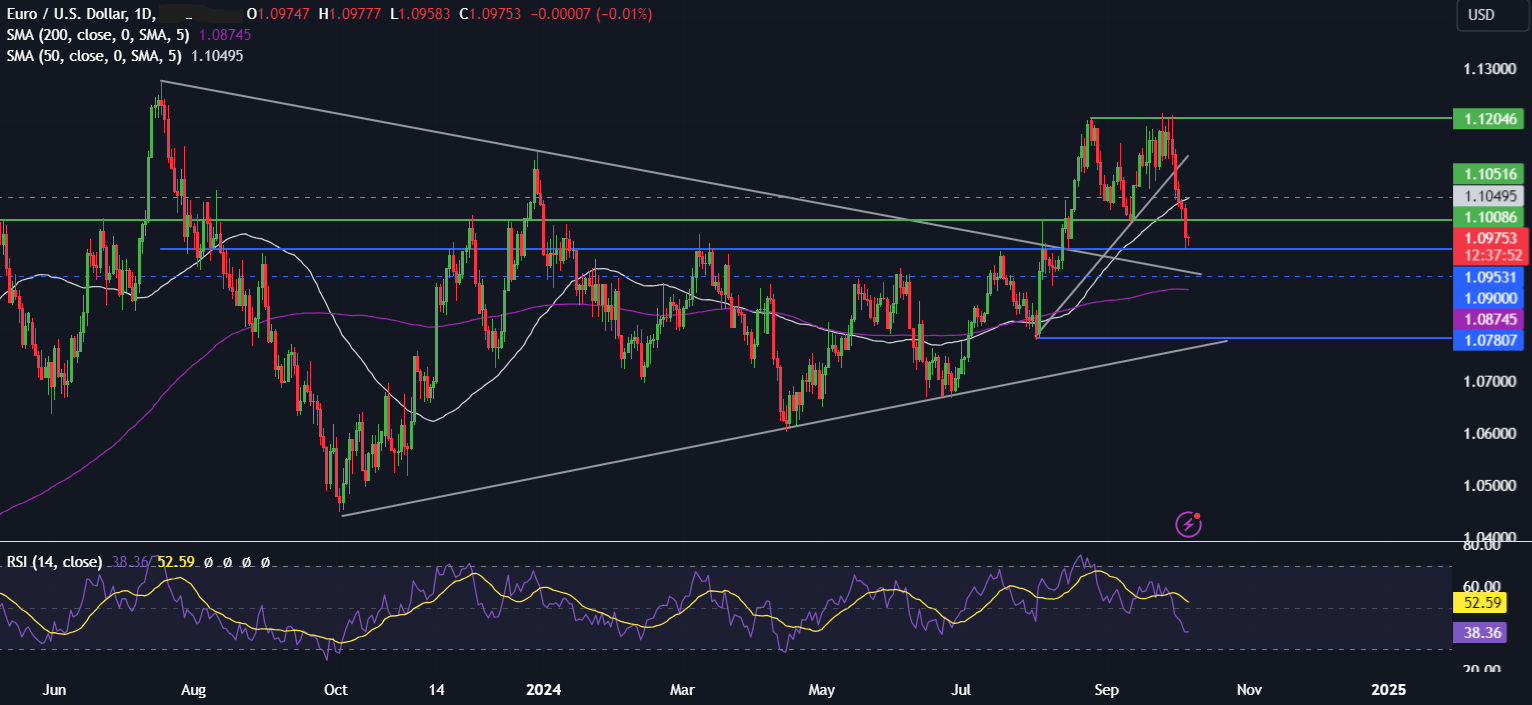
US CPI (Thursday)
US inflation data is due on Thursday and will provide a snapshot of the economy as the Federal Reserve begins to cut interest rates. Economists expect inflation to cool to 2.3% YoY in September, down from 2.5% YoY in August. The figures come as Federal Reserve officials have said they are confident that inflation is cooling towards the 2% target and as the Fed funds price in just a 5% probability over 50 basis point rate cut in November, down from over 30% on Thursday after the stronger than expected jobs data.
The recent increase in oil prices and the strikes by US workers in US coastal ports could mean that there are upside risks to inflation. However, it is too early to see these reflected in the data. With these risks looming, a hotter-than-expected inflation report could unnerve the market, hurting risk sentiment, pulling stocks lower, and sending the USD higher.
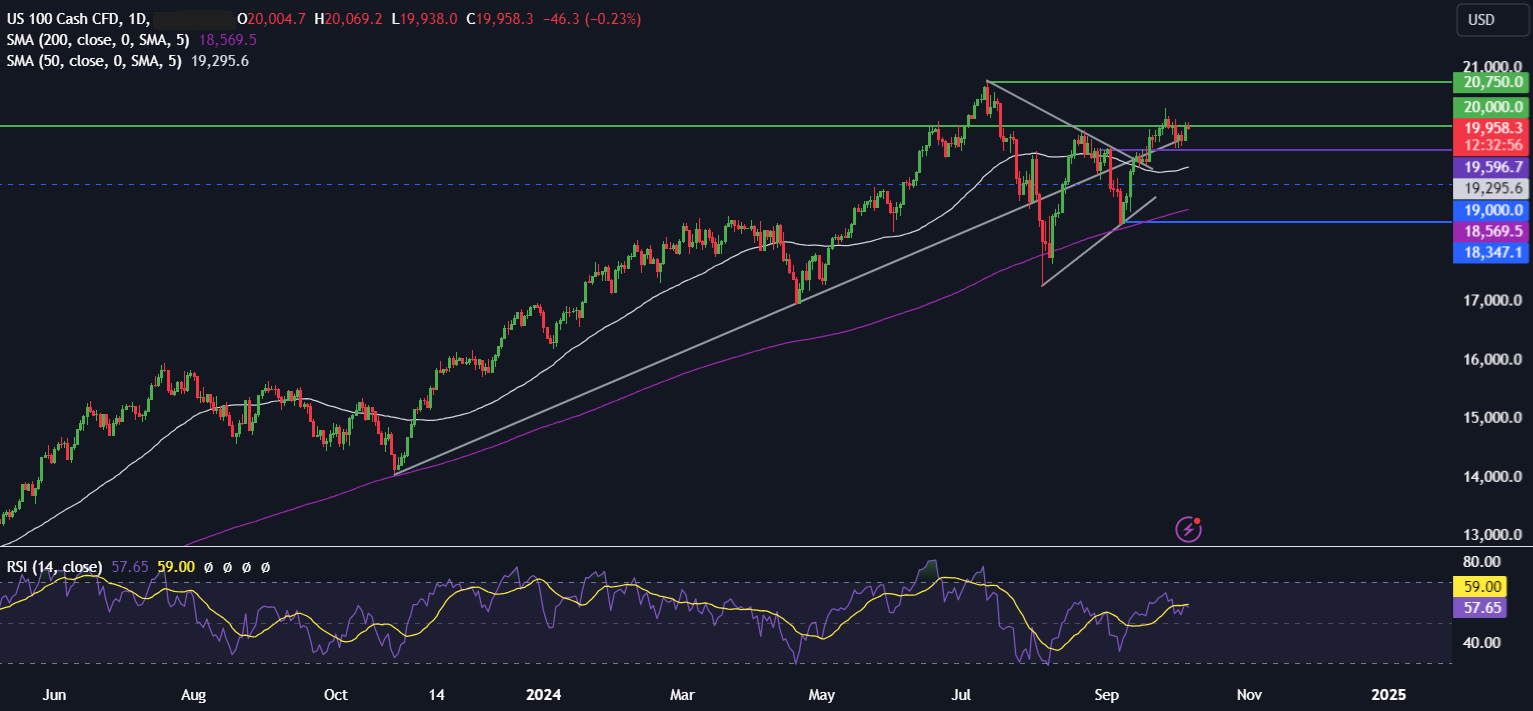
US Q3 earnings season (Friday)
Corporate earnings begin rolling in this week and will be a key test for the recent rally in U.S. stock indices. Investors will want to see companies posting healthy profit growth and solid outlooks for the next year to sustain current lofty valuations as the S&P 500 and the Dow Jones trade around all-time highs.
S&P 500 earnings are expected to have climbed 4.7% in Q3 compared to a year earlier. Strong profits could fuel more gains in stock indices.
Banks will be kicking off the Q3 earning season, and their results offer an important view into the economy, particularly regarding bad loan provisions and loan demand.
The S&P 500 trades just below its all time high. A strong earnings season could be the next catalyst to lift stock indices higher.
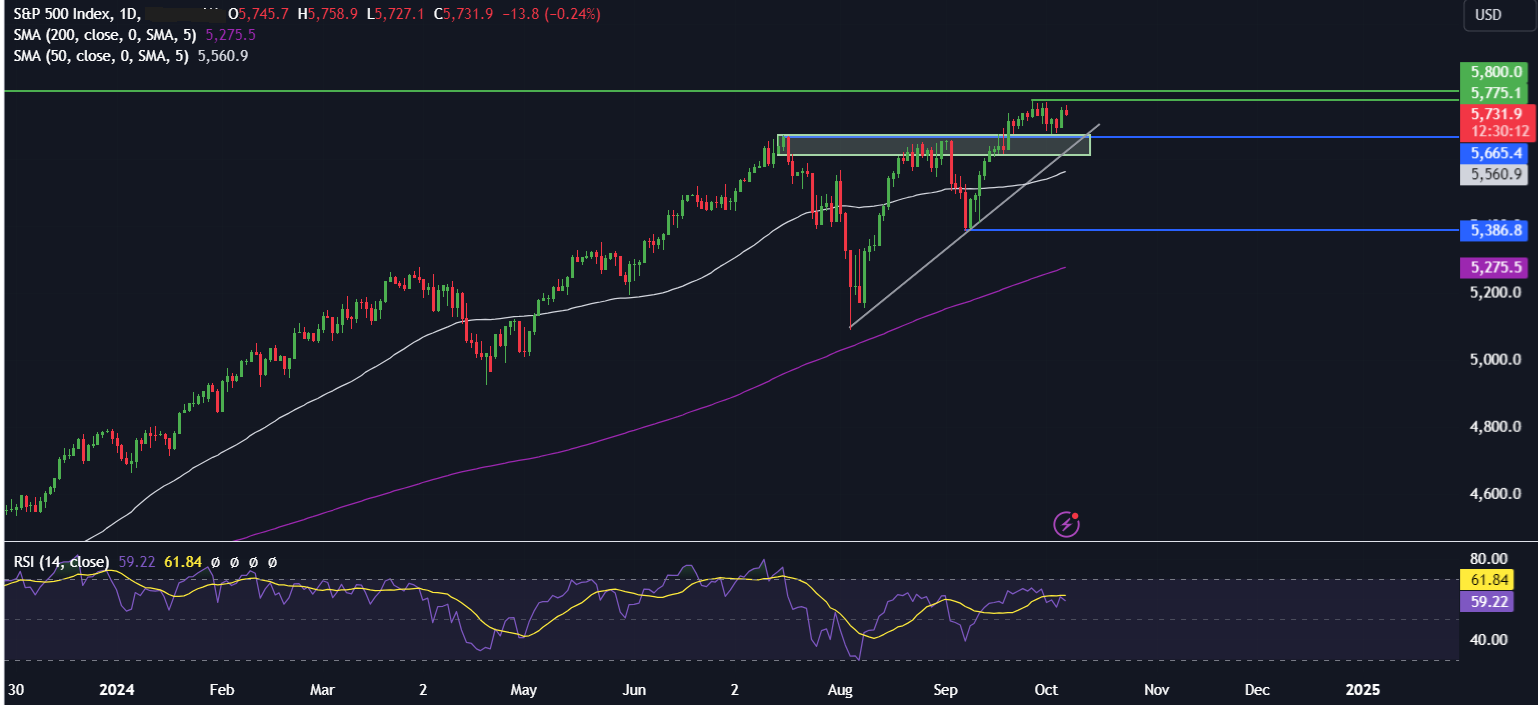
UK GBP (Friday)
On Friday, UK GP data will be in focus. It is expected to show a 0.2% month-month growth versus 0% growth in June and July. While stronger-than-expected growth could help boost GBP, it’s unlikely to draw a sustained shift in market pricing for Bank of England interest rate cuts. Weaker than expected growth could pull GBP lower.
Last week, the pound saw heightened volatility after Bank of England governor Andrew Bailey warned that the central bank could be more aggressive in cutting rates. This was slightly offset, however, by comments from chief economist Hugh Hill, who warned that the central bank still needs to remain cautious when cutting.
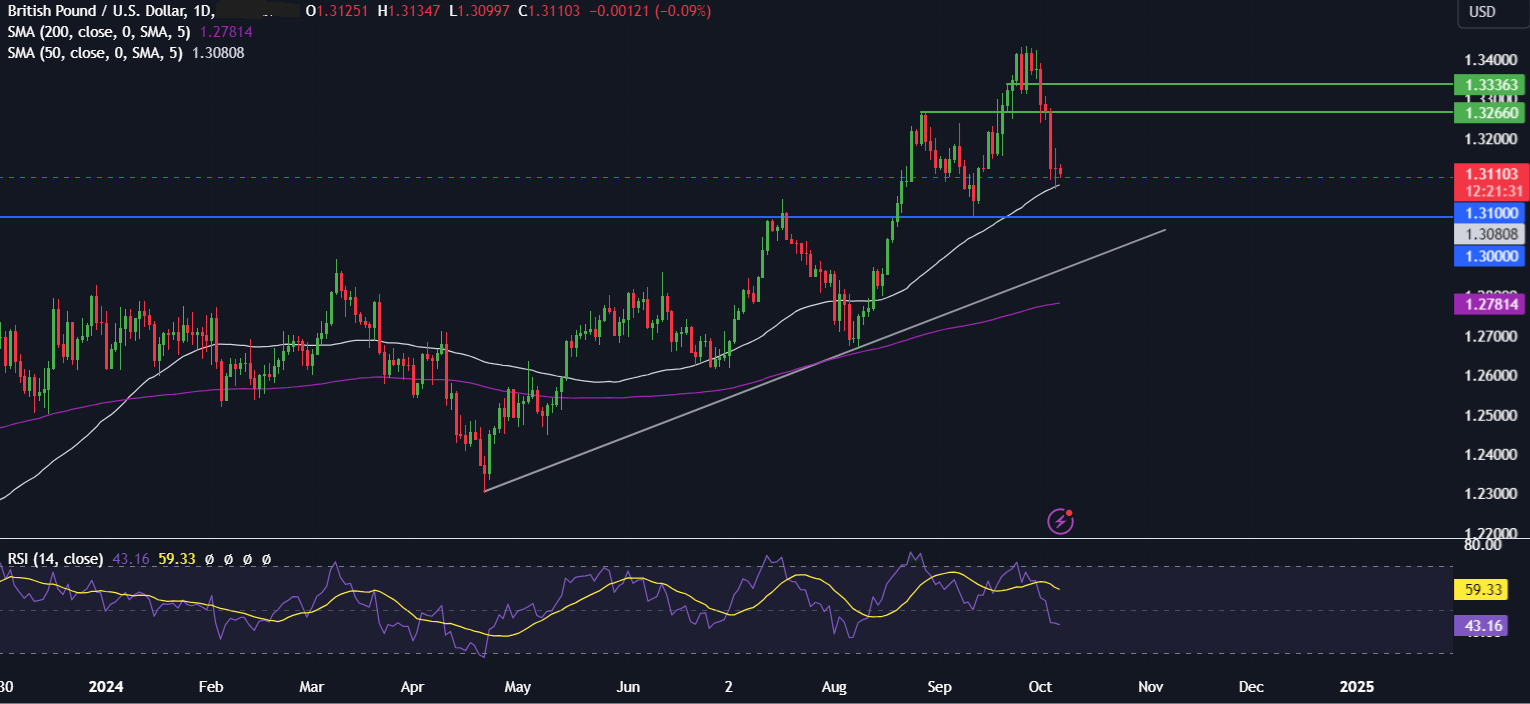
Geopolitical tension
Political tensions in the Middle East will remain in focus after an escalation in the conflict last week. So far, geopolitical risks have been mainly played out in the oil market amid concerns that the conflict could broaden out and directly impact the oil supply. Should these concerns continue, the oil prices may rise further. Any sense that the situation in the Middle East is easing could see oil focus more attention on OPEC+, which is set to unwind down oil output cuts by 180k bpd starting in December.
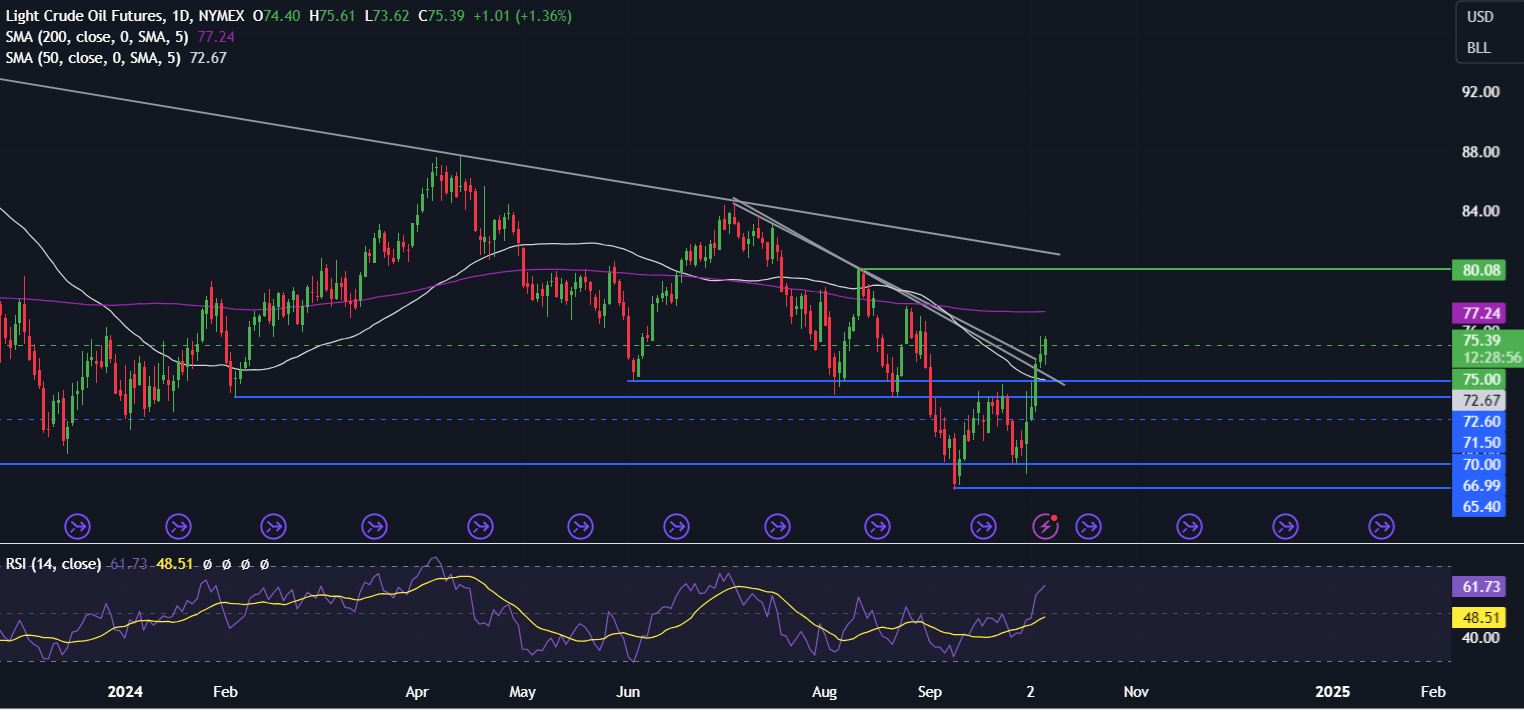
The content provided here is for informational purposes only. It is not intended as personal investment advice and does not constitute a solicitation or invitation to engage in any financial transactions, investments, or related activities. Past performance is not a reliable indicator of future results.
The financial products offered by the Company are complex and come with a high risk of losing money rapidly due to leverage. These products may not be suitable for all investors. Before engaging, you should consider whether you understand how these leveraged products work and whether you can afford the high risk of losing your money.
The Company does not accept clients from the Restricted Jurisdictions as indicated in our website/ T&C. Some services or products may not be available in your jurisdiction.
The applicable legal entity and its respective products and services depend on the client’s country of residence and the entity with which the client has established a contractual relationship during registration.




